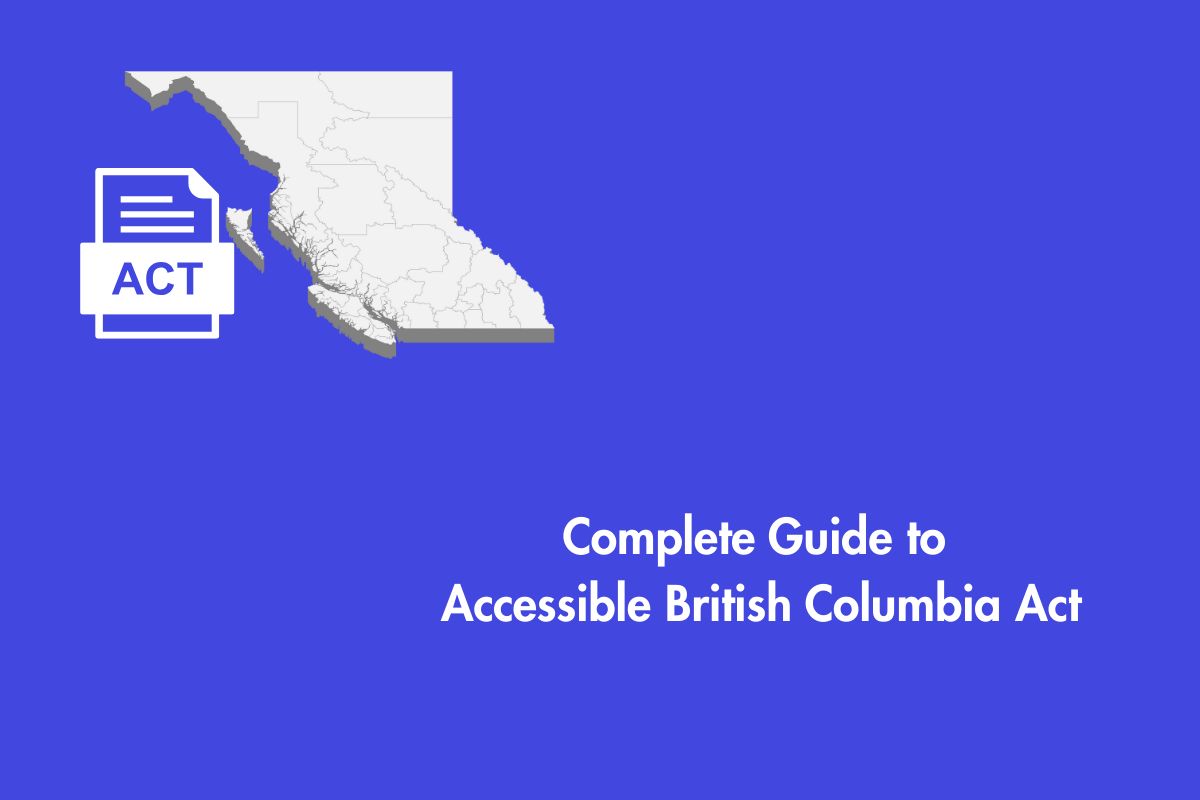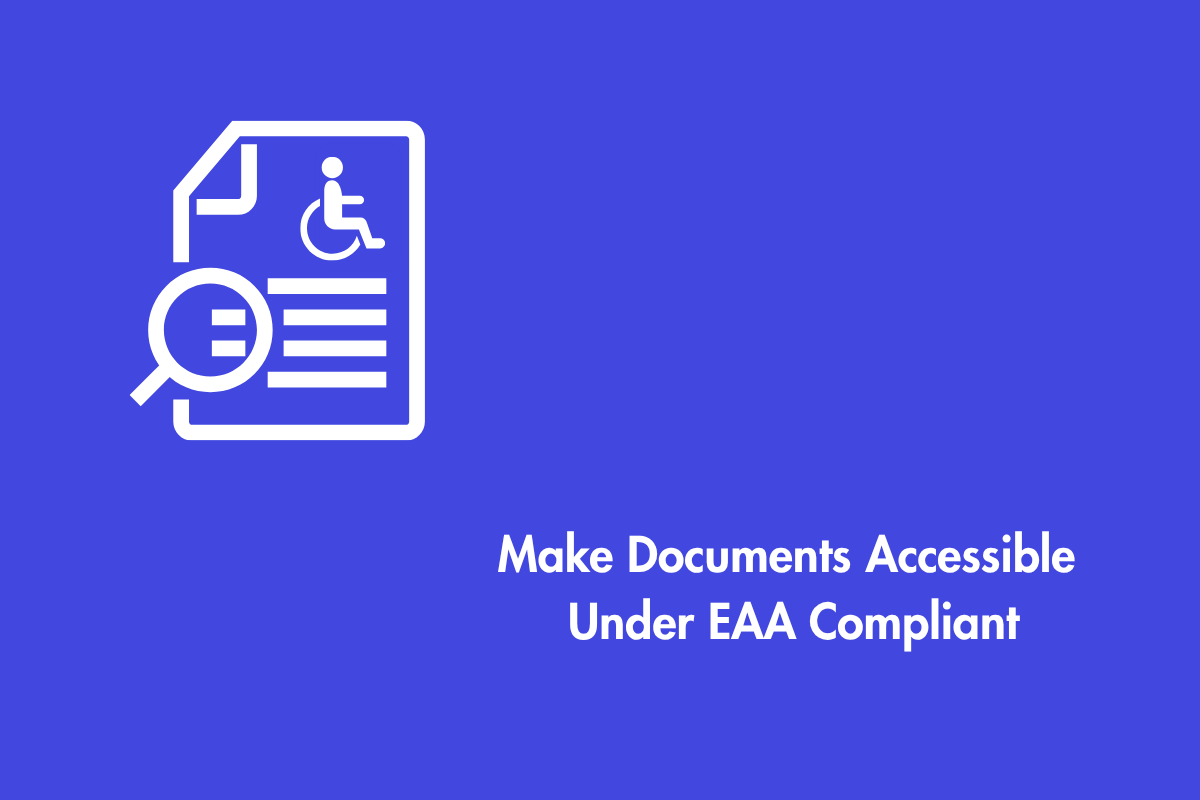Imagine a British Columbia (BC) where everyone truly belongs–where getting a job, riding the bus, learning in school, or accessing government services doesn’t involve unnecessary hurdles. That’s the powerful vision behind the Accessible British Columbia Act (ABCA). It’s not just a hopeful idea – it’s the law.
Think of it as BC’s blueprint for breaking barriers– not only just the physical barriers like steps without ramps but also less obvious ones like websites that are hard to navigate, incomprehensible forms, and attitudes that exclude people. This law changes the game, and everyone who lives, works, or conducts business here has to know and understand what it means.
Table of Contents
- 1 Forget Legalese: What Does the ABCA Actually Do?
- 2 Key Focus Areas of the ABCA
- 3 Who Needs to Pay Attention? (Spoiler: Lots of Us!)
- 4 The Big Three: Your Action Items Under the ABCA
- 5 Develop an Accessibility Plan
- 6 Tackling the Big Areas: Where Barriers Hide
- 7 Why Should You Care? (Beyond “It’s the Law”)
- 8 What Can You Do? Your Role in the Accessibility Journey
- 9 What’s Next? The Journey Continues
- 10 Conclusion
Forget Legalese: What Does the ABCA Actually Do?
In simple terms, the ABCA sets out a clear, proactive plan to make BC more accessible over time. It moves us away from reacting to individual complaints about barriers, and instead says: “Let’s find these barriers and remove them before they cause problems.” It’s about baking accessibility right into how organisations operate.
Here’s the core mission: Achieve a barrier-free BC by June 1, 2041. Ambitious? Absolutely. Necessary? Without a doubt.
The Accessible British Columbia Act (Bill 6) was introduced in 2021, empowering the province to develop and implement accessibility standards across critical areas, including goods and services, information and communication, public transportation, employment, the built environment, education, and other designated activities. The Act prioritises the prevention and removal of barriers, promotes active public engagement, and complements the federal Accessible Canada Act.
The ABCA outlines a 10-year implementation strategy with key focus areas including:
- Culture change
- Government obligations
- Monitoring and evaluation
- Standards development
- Regulatory compliance
Key Focus Areas of the ABCA
Accessible Websites and Digital Content: Organisations must meet the WCAG 2.1 Level AA web accessibility standards to ensure equal access to online services and information.
Accessibility Planning: All covered organizations are required to create accessibility plans in consultation with people with disabilities, outlining clear actions and timelines to improve accessibility.
Accessibility Compliance: The Act mandates improvements across various areas such as employment, communication, the built environment, and information and communications technology (ICT) to meet legal accessibility standards.
Feedback and Customer Service: Organizations must set up clear and accessible feedback mechanisms to gather public input and respond to accessibility concerns, helping guide continuous improvement.
Who Needs to Pay Attention? (Spoiler: Lots of Us!)
The Accessible British Columbia Act (ABCA) isn’t limited to provincial government offices; it casts a much wider net. If your organization delivers public services or operates in the public interest, chances are the ABCA applies to you.
Here’s a breakdown of who’s covered:
Provincial Public Sector Organizations: Covers all offices, departments, and organizations of the state government, such as BC Hydro, ICBC, and BC Housing.
Local Government and Communities: Applies to communities at the municipal level include parks and library boards as well as districts, cities, towns, and regional districts.
Education Sector: Covers all public school districts, private schools, colleges, universities, and academies.
Health Authorities: Covers all regional health authorities.
Prescribed Organizations: The government can add others over time (like larger non-profits or specific businesses – keep an eye out!).
If your organisation falls into one of these categories, the ABCA sets specific obligations you must meet.
The Big Three: Your Action Items Under the ABCA
So, what do covered organizations actually have to do? The Act focuses on three key pillars:
Establish an Accessibility Committee:
What it is: Establish a dedicated group focused on accessibility within your organization.
Who’s on it: At least half of the members must be people with disabilities or individuals who support them, such as family members or advocates. You need diverse perspectives – different types of disabilities, backgrounds, ages, regions. This isn’t a token gesture; it’s central to getting real insight.
What it does: This committee guides your whole accessibility journey. It helps identify barriers, advices on your plan (see #2), and monitors progress. They are your essential partners and experts-by-experience.
Why it matters: Nothing about us without us! People facing barriers daily know best where the problems lie and what solutions will actually work. This ensures plans aren’t just theoretical.
Develop an Accessibility Plan
Your Accessibility Plan: Your Ongoing Barrier Removal Guide
Your Accessibility Plan is not just a one-time report; it’s a living, evolving roadmap. It outlines how your organization will identify, prevent, and remove barriers, and guides your progress toward becoming fully accessible.
What the Plan Must Include:
Clearly explain how you will address barriers in the key areas defined by law (e.g., employment, communication, services). Your plan should include:
- Specific actions you’ll take
- Measurable goals
- Realistic timelines
Prepare a document with feedback from your Accessibility Committee and the public.
Keep it current: Publish the plan publicly, then review and update it every three years. Each update should outline:
- What you’ve accomplished
- What you’ve learned
- What you plan to do next
Implement feedback:
The tool: A simple, user-friendly way for employees, clients, consumers, and the public to notify your firm of their challenges and suggest adjustments.
How it works: Make sure this is easily accessible—an online form, email address, phone number, physical drop box, or a combination! Tell others how to contribute.
Take action: Acknowledge feedback. More importantly, consider all suggestions when establishing and amending your Accessibility Plan. Show your focus and activity.
Close the loop: Report back through Accessibility Plan updates about how feedback was used and what actions were taken as a result..
Tackling the Big Areas: Where Barriers Hide
The Accessible British Columbia Act covers a wide range of areas to ensure accessibility is embedded in every part of daily life. Here’s how the Act aims to make British Columbia more inclusive across different sectors:
- Employment: Make sure that job postings, interviews, and onboarding are easy to locate.
- Service Delivery: Makes sure that programs, services, or goods are usable by all.
- The Built Environment: Makes sure that entrances, bathrooms, signs, lighting, sound, and emergency procedures are accessible and navigable.
- Information and Communications: Makes sure that everyone can access and understand information.
- Procurement: Takes accessibility into account when buying goods, services, and facilities.
- Transportation: Improves ease of transport by making vehicles, transit stops, booking systems, and driver training accessible to all users.Technology: Makes sure digital tools and platforms are compatible with assistive technologies.
- Policy Development: Ensures accessibility is a fundamental part of creating and reviewing policies.
Why Should You Care? (Beyond “It’s the Law”)
The Accessible British Columbia Act (ABCA) is about more than just rules; it’s about building a province where everyone can fully participate. When communities are accessible, they’re stronger, welcoming, and work better for everyone. Clear signs, easy-to-use websites, accessible sidewalks and buildings benefit not just people with disabilities, but parents with strollers, seniors, and anyone with temporary injuries.
People with disabilities are also valuable team members, customers, and contributors to the economy. Businesses that are accessible attract more customers and talent. This is about fairness, dignity, and creating equal opportunities for all–a reflection of British Columbia’s core values.
What Can You Do? Your Role in the Accessibility Journey
Accessibility is a shared responsibility. The ABCA invites everyone to take part: by joining an accessibility committee, giving feedback, or helping put accessibility plans into action in your workplace or community.
You can also:
- Learn about different types of disabilities and barriers
- Support accessible businesses
- Use clear, inclusive language
- Choose accessible venues and services
- Be an ally and speak up for inclusion
Organisations like Disability Alliance BC and Spinal Cord Injury BC offer great resources to help you get started.
What’s Next? The Journey Continues
Since becoming a law in 2021, the ABCA has laid the foundation for long-term change. Organizations across the province are now building accessibility plans, forming committees, and collecting public feedback. Progress is ongoing.
As new standards are developed and plans evolve, our understanding of accessibility continues to grow. The journey isn’t over but every step forward helps create a more inclusive B.C. for everyone.
Conclusion
The Accessible British Columbia Act (ABCA) aims to create a barrier-free British Columbia by June 1, 2041. It addresses accessibility challenges in key areas such as employment, education, transportation, and government services. The Act applies to a wide range of public sector organizations, including provincial government offices, municipalities, schools, health authorities, and other designated groups.
To help with accessibility efforts, organizations must create an accessibility committee that has at least half of its members with disabilities.These committees help guide the development of an Accessibility Plan, which identifies, removes, and prevents barriers. Public input and committee feedback are essential to keeping the plan relevant and effective. Organizations must also create a feedback system that allows people to report accessibility issues and suggest improvements.
The ABCA is more than just legislation. It’s a pathway to building stronger, more inclusive communities that benefit everyone.



